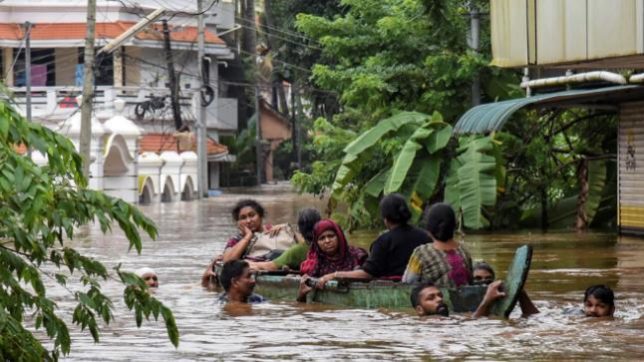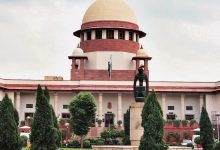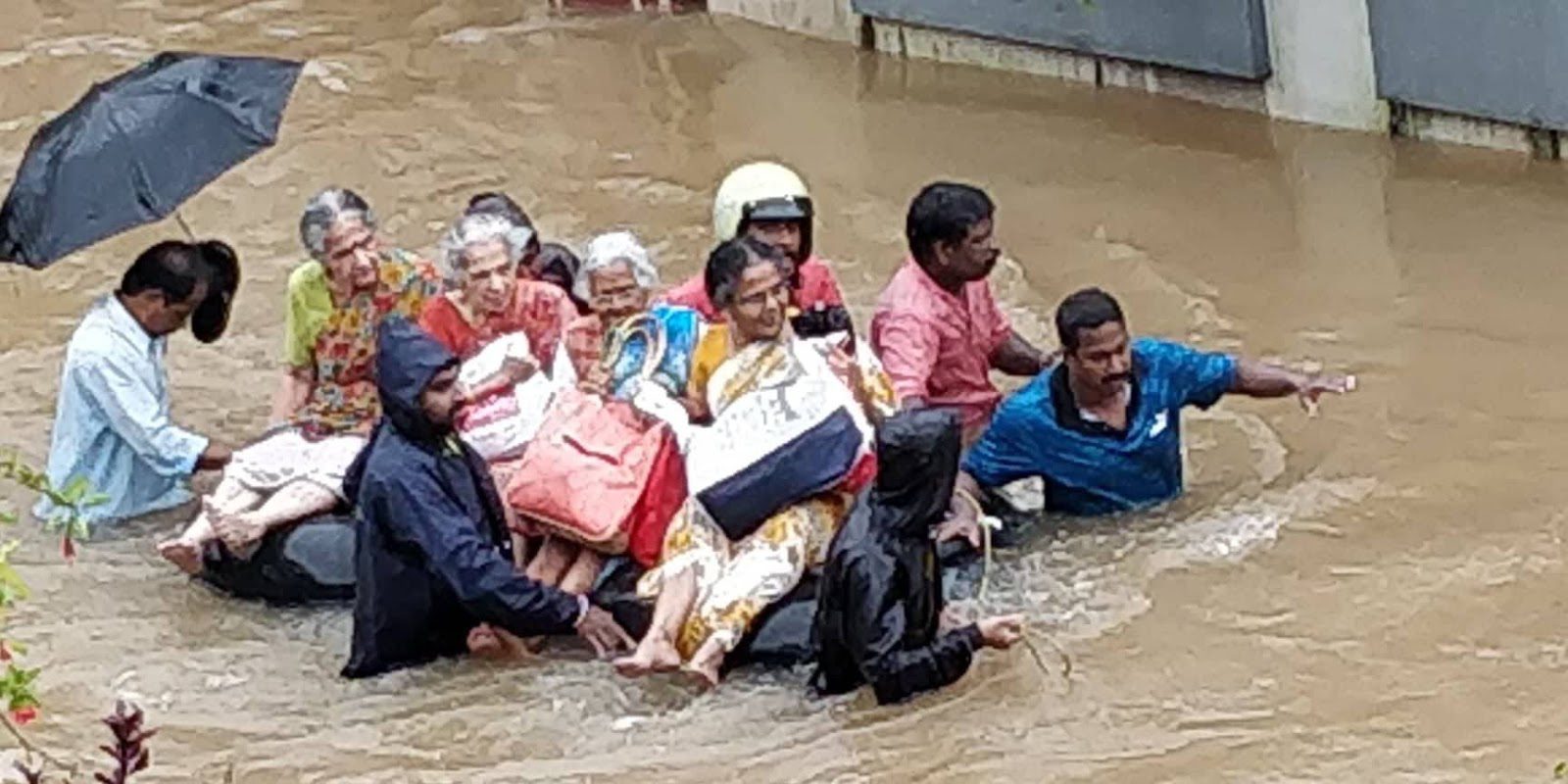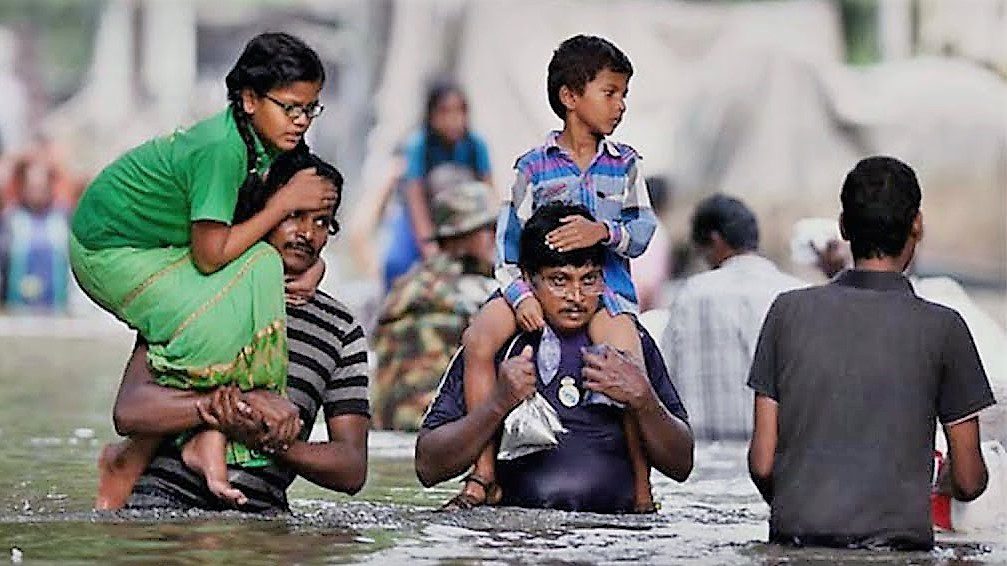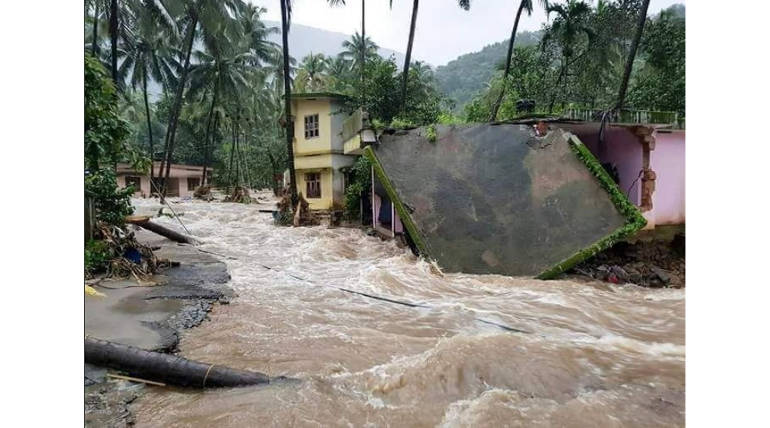With the raging waters receding and rain easing, the focus has shifted to the stupendous task of reconstruction. The people of Kerala, led manfully by the Pinarayi Vijayan-led LDF government, are bending their energies towards the task of rebuilding damaged homes, bridges and roads. Rightly, the focus now is on tackling infrastructural deficiencies. It is an extremely heart-warming thought that in this gigantic task, Kerala is not alone. Aid and help are pouring in abundant measure from inside the state, outside and even from abroad. A report for Different Truths.
The worst, hopefully, is over. Rain-ravaged Kerala is getting its breath back. Petrified people are picking up the pieces of their lives shattered by the deluge of death and destruction.
With the raging waters receding and rain easing, the focus has shifted to the stupendous task of reconstruction. The people of Kerala, led manfully by the Pinarayi Vijayan-led LDF government, are bending their energies towards the task of rebuilding damaged homes, bridges and roads. Rightly, the focus now is on tackling infrastructural deficiencies. It is an extremely heart-warming thought that in this gigantic task, Kerala is not alone. Aid and help are pouring in abundant measure from inside the state, outside and even from abroad.
Now is also the time for serious introspection. The mirror has to be turned to each and every one of us. How did we find ourselves in such a sorry plight? It was not a crisis of a day’s making. In fact, it would be no exaggeration to say that it was a disaster waiting to happen.
There is no escaping the reality that its man’s cruelty to nature and his shocking assault on the environment which has brought the catastrophe. Nature has, at last, hit back with a vengeance.
First, a close look at the factors which triggered the worst rain havoc to devastate Kerala. Topping the list is our criminal failure to implement the Madhav Gadgil report. Here was a report that provided the recipe for environment-friendly development. But successive governments succumbed to the pressure of real estate interests and the moneyed class, and ignored the Western Ghats Ecology Expert Panel (WGEEP) prepared by Gadgil. What followed were a no-holds-barred illegal and thoughtless construction spree and a free hand to the quarry mafia. The result, inevitably, was the destruction triggered by torrential rains. Rampant construction in Zone 1, which covered ecologically fragile areas close to the Western Ghats, without a care for and in blatant violation of all rules spelt doom. An analysis of the rain havoc would show that the regions hit the hardest were districts in the lap of the Western Ghats: Wayanad, Alappuzha, Pathanamthitta, Idukki and Kozhikode.
The WGEEP report had sounded a grim note of warning: for God’s sake, adopt a holistic approach to use of precious water and land resources. But the caution fell on deaf ears. And the result is there for all to see.
A major contributory factor to the mayhem has been the recent amendment of the Kerala Conservation of Paddy Land and Wetlands Act. This was a serious lapse as it literally opened the floodgates of danger and destruction. The easing of norms for use of wetlands for other use was an invitation to disaster. Vested interests had a field day filling up paddy land and wetland to further their nefarious ends. If the paddy fields and wetlands had not been filled up, they would have played a major role in preventing flooding to a great extent. This being the resounding reality, the government must, without any further delay, take steps to save at least the remaining paddy fields and wetlands. Refusal to do so even in the face of such a frightening disaster would be an unpardonable crime. Future generations would not forgive us if we do not rise to the occasion and do the needful.
Yet another crime against humanity and a blatant assault on nature has been the unbridled encroachments on the rivers. Here, the finger must be pointed at the state governments and the local bodies, which turned a blind eye to unpardonable assaults on the river bed, mining of sand by the sand mafia.
Of all the regions, it was Kuttanad in Alappuzha district, known as Kerala’s rice bowl, which bore the brunt of the rain and flood fury. The Kuttanad package, based on a report from the MS Swaminathan Research Foundation, aimed at alleviating agrarian distress and restoring the ecology of the sensitive region, gathered dust. What actually happened was a spree of construction. The flawed implementation of the Kuttanad package proved highly detrimental to the region. The Swaminathan report had suggested a mix of concrete bunds and bio-bunds using clay, mangroves and planting of fruit trees. But the suggestions were ignored and the authorities concentrated on the building of only concrete bunds with disastrous results for the region’s ecosystem and wetland system.
Faulty management of dams also caused flash floods. Release of water only when it fills to the brim is of no use. Water should have been released moderately during the middle of the rainy season. Such a step would have prevented the damage caused by sudden release of water downstream.
It must be mentioned in hindsight that one of the main reasons which added to the misery of the people was the simultaneous release of waters from as many as 36 dams in the state – something unprecedented in the history of Kerala! That thoughtless step literally opened the floodgates of misery and suffering for the people living near the dams.
At the end of the day, there are a number of lessons to be learnt from the disaster that battered Kerala. Of paramount importance is the need to evolve a culture of love for nature. Development does not, and should not, mean indiscriminate construction of buildings and human intervention with nature. The time to formulate a nature-friendly policy is now. It brooks no delay. Development without a thought for environment can only lead to utter ruin. If the disasters of the magnitude which hit Kerala are not to recur, we must learn to live in harmony with nature.
P. Sreekumaran
©IPA Service
Photo from the Internet

